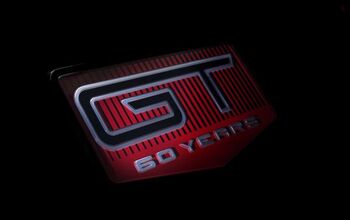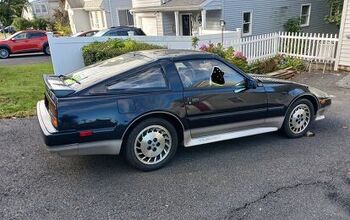Nissan Becomes Profitable Again

The last few years have certainly been interesting for Nissan. After clawing its way back from financial disaster in the early 2000s, the company endured one of the most high-profile and scandal-ridden management shakeups in automotive history by 2018. It also became desperately unprofitable while incurring negative growth, with the remaining leadership deploying an aggressive restructuring plan designed to help get the business back on track.
Those efforts appear to have been successful.
Nissan is back in the black and turning a profit for the first time in three years, according to CEO Makoto Uchida and a report from Automotive News.
Over the last fiscal year, ending on March 31st for Nissan, the company showed operating profit pitching up to 247.3 billion yen ($2.03 billion USD). However, Uchida’s targeted 5 percent operating profit margin will take a little longer to achieve. Nissan only managed a 2.9 percent margin for 2021. Though it’s still a major step in the correct direction and ultimately good news for the manufacturer, as the year’s mid-term revival plan only called for 2 percent.
Uchida staked his job on a successful turnaround in 2020, mimicking the actions of the now-defamed Carlos Ghosn from 1999. Though, while the former CEO is now living on the lam in Lebanon, Nissan’s current boss is still hoping to appease shareholders. During the announcement of the company’s financial results, Uchida confessed that his job was far from finished.
“Finally, we are at the starting line,” the CEO said on Thursday. “Now is the time to deliver greater value and grow the company.”From Automotive News:
Uchida unveiled his Nissan Next mid-term plan in 2020, focusing on cutting fixed cost, trimming production capacity, launching new product and improving revenue per vehicle. The campaign wraps up in the fiscal year ending March 31, 2024, but Nissan is ahead of plan by many measures.
Nissan has cut global capacity 20 percent, trimmed the number of nameplates 15 percent and slashed 350 billion yen ($2.87 billion) in fixed costs. COO Ashwani Gupta said the rationalization phase of the comeback plan is complete, and Nissan is focused now on growth.
Uchida and Gupta took the reins at Nissan in late 2019 while the company still reeled from the arrest and ouster of longtime leader Ghosn and frayed relations with French partner Renault.
The resulting fallout had seriously tarnished the brand’s image. But it had also become plagued with quality control issues and maintaining production schedules (like the rest of the industry) as global sales volumes pitched downward. These were all things Nissan had hoped to fix during its restructuring phase but not before it endured its worst-ever operating loss in 2020.
Fortunately, the automaker just rebounded with an annual net income of 215.5 billion yen ($1.77 billion), flipping last year’s financial forfeiture of 448.7 billion yen ($3.68 billion). Sales improved 2 percent (YOY) to 1.18 million units in North America. However European volumes declined 13 percent to just 340,000 vehicles. Nissan’s largest market, China, also declined by 5 percent — resulting in 1.38 million deliveries.
Despite reforming itself into a profitable business, headwinds will persist. The rising price of raw materials is going to make it harder for all automakers and Nissan acknowledged that last year’s earnings were helped immensely by selling its entire stake in Daimler. This has led the company to forecast relatively meager improvements for next year’s report. Nissan is estimating operating profit to advance by 1.1 percent to 250.0 billion yen ($2.05 billion), while its net income is likely to decline. Meanwhile, global revenue is assumed to grow by 19 percent to 10 trillion yen ($82.03 billion) for 2022. Total sales are also anticipated to climb by 3.2 percent, resulting in some 4 million deliveries by the end of March 2023.
[Image: Memory Stockphoto/Shutterstock]

A staunch consumer advocate tracking industry trends and regulation. Before joining TTAC, Matt spent a decade working for marketing and research firms based in NYC. Clients included several of the world’s largest automakers, global tire brands, and aftermarket part suppliers. Dissatisfied with the corporate world and resentful of having to wear suits everyday, he pivoted to writing about cars. Since then, that man has become an ardent supporter of the right-to-repair movement, been interviewed on the auto industry by national radio broadcasts, driven more rental cars than anyone ever should, participated in amateur rallying events, and received the requisite minimum training as sanctioned by the SCCA. Handy with a wrench, Matt grew up surrounded by Detroit auto workers and managed to get a pizza delivery job before he was legally eligible. He later found himself driving box trucks through Manhattan, guaranteeing future sympathy for actual truckers. He continues to conduct research pertaining to the automotive sector as an independent contractor and has since moved back to his native Michigan, closer to where the cars are born. A contrarian, Matt claims to prefer understeer — stating that front and all-wheel drive vehicles cater best to his driving style.
More by Matt Posky
Latest Car Reviews
Read moreLatest Product Reviews
Read moreRecent Comments
- Brendan Duddy soon we'll see lawyers advertising big payout$ after getting injured by a 'rogue' vehicle
- Zerofoo @VoGhost - The earth is in a 12,000 year long warming cycle. Before that most of North America was covered by a glacier 2 miles thick in some places. Where did that glacier go? Industrial CO2 emissions didn't cause the melt. Climate change frauds have done a masterful job correlating .04% of our atmosphere with a 12,000 year warming trend and then blaming human industrial activity for something that long predates those human activities. Human caused climate change is a lie.
- Probert They already have hybrids, but these won't ever be them as they are built on the modular E-GMP skateboard.
- Justin You guys still looking for that sportbak? I just saw one on the Facebook marketplace in Arizona
- 28-Cars-Later I cannot remember what happens now, but there are whiteblocks in this period which develop a "tick" like sound which indicates they are toast (maybe head gasket?). Ten or so years ago I looked at an '03 or '04 S60 (I forget why) and I brought my Volvo indy along to tell me if it was worth my time - it ticked and that's when I learned this. This XC90 is probably worth about $300 as it sits, not kidding, and it will cost you conservatively $2500 for an engine swap (all the ones I see on car-part.com have north of 130K miles starting at $1,100 and that's not including freight to a shop, shop labor, other internals to do such as timing belt while engine out etc).


































Comments
Join the conversation
I have an 09 Altima closing in 200K. No issues other than the CVT, which was replaced under warranty with about 2000 miles to spare on the 120K warranty. I wouldn't buy another car with a CVT, both due to my perception of its longevity and I don't like the dynamics of how they drive. Most of my driving is with just me in the car but the way the CVTs don't coast is a strange sensation when you are the passenger in the car. I'm not sure how they can compete if others use a traditional proven auto transmission.
Before ICE dies, I would like some GTR.